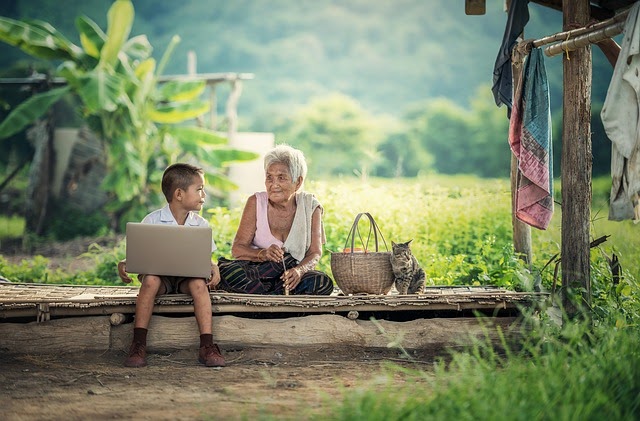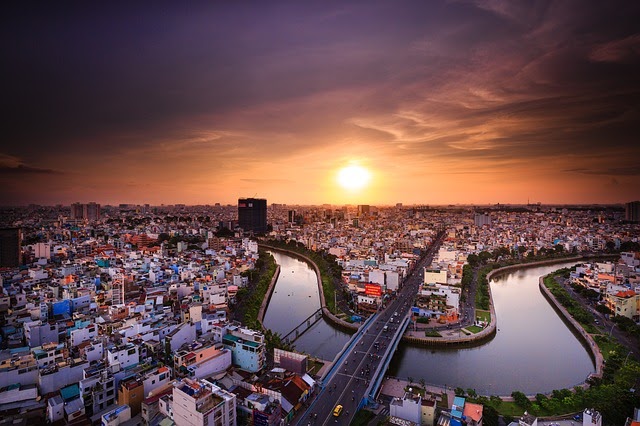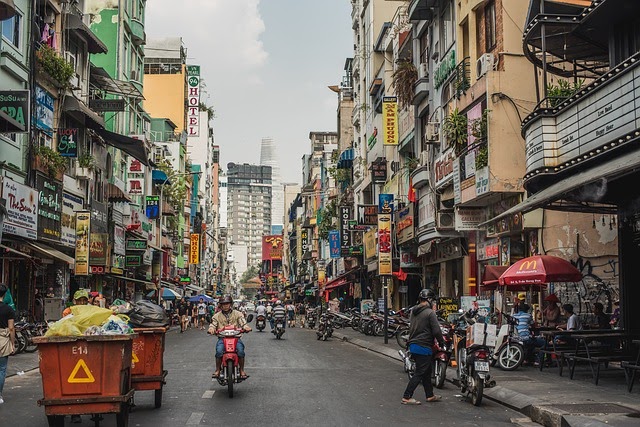
Discover Culture
Share:
- Published:
- Updated: 20/01/25

Table of Contents
Discover Culture
Vietnamese culture is fascinating, complex, and diverse, and varies across the country. However, several trends are noteworthy and can be generalized.
Family Life

The family is the center of Vietnamese culture. Families in Vietnam are often large and closely-knit, and many generations may live in one dwelling. The language has evolved to reflect this: pronouns in Vietnamese reflect the age, gender, and social relationship of each person speaking in a conversation.
Rather than ‘I’ and ‘You’ as would be found in English, pronouns in Vietnamese are complex and vary widely depending on the social situation. Language learners may note that a person often refers to themselves in the third person based on their relationship with the person with whom they’re communicating.
Elders are thoroughly respected in Vietnam, though they may often be seen simply hanging out outside a house in what look like pajamas. Since there are essentially no nursing homes, they stay with their families.
Religion

Vietnam has a wide mix of religions, with Buddhism forming the majority of worshippers and Catholicism being second. Vietnamese Buddhism is a mixture of traditional Buddhist beliefs combined with more local practices that include touches of Confucianism and ancestor worship.
Vietnam is among the least religious countries in southeast Asia. Although temples, pagodas, and churches can be found across the country, and shrines exist in many houses and businesses, you won’t see nearly as many religious buildings or monks as can be found in Cambodia or Thailand.
In contrast to countries like the Philippines or Thailand, Islam is essentially nonexistent in Vietnam.
Urban Layout

Houses in Vietnam are much closer together than can be found in suburban areas of western cities. The best analogy would be to think of European medieval streets in terms of narrowness and closeness. Houses are often long and thin, reflecting a segment of the tax code: a building is taxed based on its width parallel to the street. So, for example, a house that is five meters wide would pay less tax than a house that is six meters wide, even if both are 20 meters long.
Streets are also designed around motorbikes rather than cars, which lends to the narrowness felt in back alleys. It’s not uncommon for a street to be just 2-3 meters wide in some locations, especially in dense city centers.
Of course, there are wider streets, but many of these streets are where businesses or wealthy houses are found.
Essentially, the urban layout in Vietnam encourages a trend towards closeness between neighbors and families. Privacy is much less common than it would be in most western cultures.
Noise

Travelers to Vietnam are often quick to point out that noise is not frowned upon in Vietnam. In fact, it’s often encouraged, and those who are not shy to make noise will quickly find themselves adapting to Vietnamese culture.
Honking, for example, is extremely common on the road and is not considered ‘rude’ as it is in many western cultures. The same style of honk that would be considered aggressive in western countries serves as a warning or merely as a warning that says ‘look out, I’m here.’
Calling loudly for service at a restaurant, which would earn you glares and maybe even ejection from a restaurant in the west, is standard practice in Vietnam and is not considered rude at all. Shouting ‘Em oi!’ (literally “hey younger person”) is often the quickest way to get served at a coffee shop, restaurant, or bar. No one will think you’re weird or rude if you do it, as long as you do it with a smile.
Karaoke and music are often played at loud volumes across the country, which some westerners have trouble adapting to. Additionally, mobile food vendors on motorbikes will play a message on repeat declaring their wares. Noises from such vendors are so commonplace they become easy to tune out.
Related Posts
Recent Posts






